When most of us see a plant with tall, slender leaves and large seed heads, we assume we’re looking at a patch of ornamental grass. But there’s actually a lot of diversity in the grass family, and some of the plants we assume are grasses aren’t actually grasses at all!
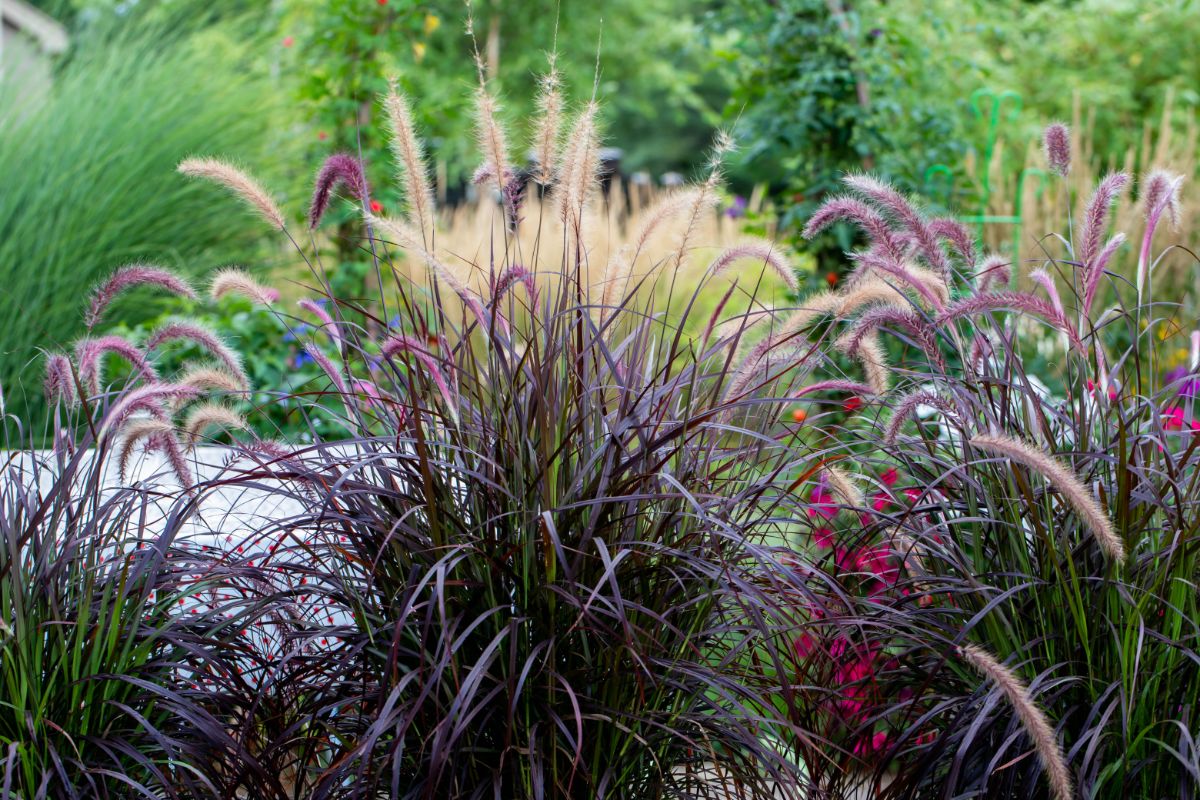
Grasses, sedges, and rushes may look alike, but they’re actually not closely related, and they have slightly different care requirements. If you’re looking for a grass-like plant, you may actually have better luck growing ornamental sedges or rushes in your garden, depending on your growing zone and the conditions in your yard. To learn more about the differences between grasses, sedges, and rushes, browse this simple guide and find the best grass-like plant for your garden today!
Jump to:
What’s in a name?
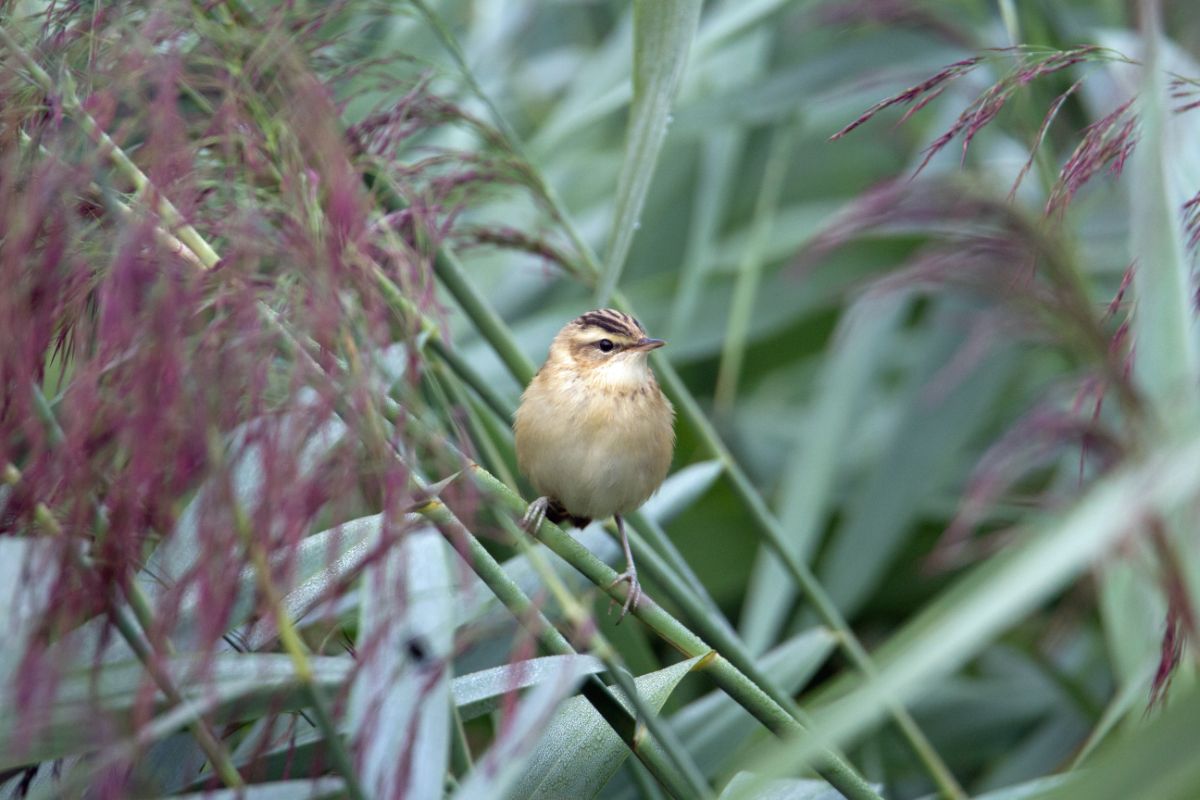
True grasses (Poaceae) belong to one of the largest and most diverse plant families around, and the grass family contains over 12,000 different species. In the grass family, there are, of course, plenty of ornamental grasses, but this family also contains many of our most common cereal grains, including rice, corn, and barley. Bamboo is also a type of grass, and much of our current diet relies on members of the grass family.
While they may look similar, rushes belong to their own family of plants (Juncaceae). The rush family is much smaller than the grass family and only contains about 460 species. Both rushes (Juncus), and wood rushes (Luzula) fall into this plant family, and they can be used a bit differently than grasses in landscape settings.
Sedges (Cyperaceae) are yet another grass-like plant with its own unique characteristics and growing needs. This plant family contains about 5,500 species of plants, including true sedges and plants like papyrus. These plants are less commonly grown than grasses in garden landscapes, but there are certain reasons why you may prefer to grow rushes or sedges over true grasses.
Learning the difference
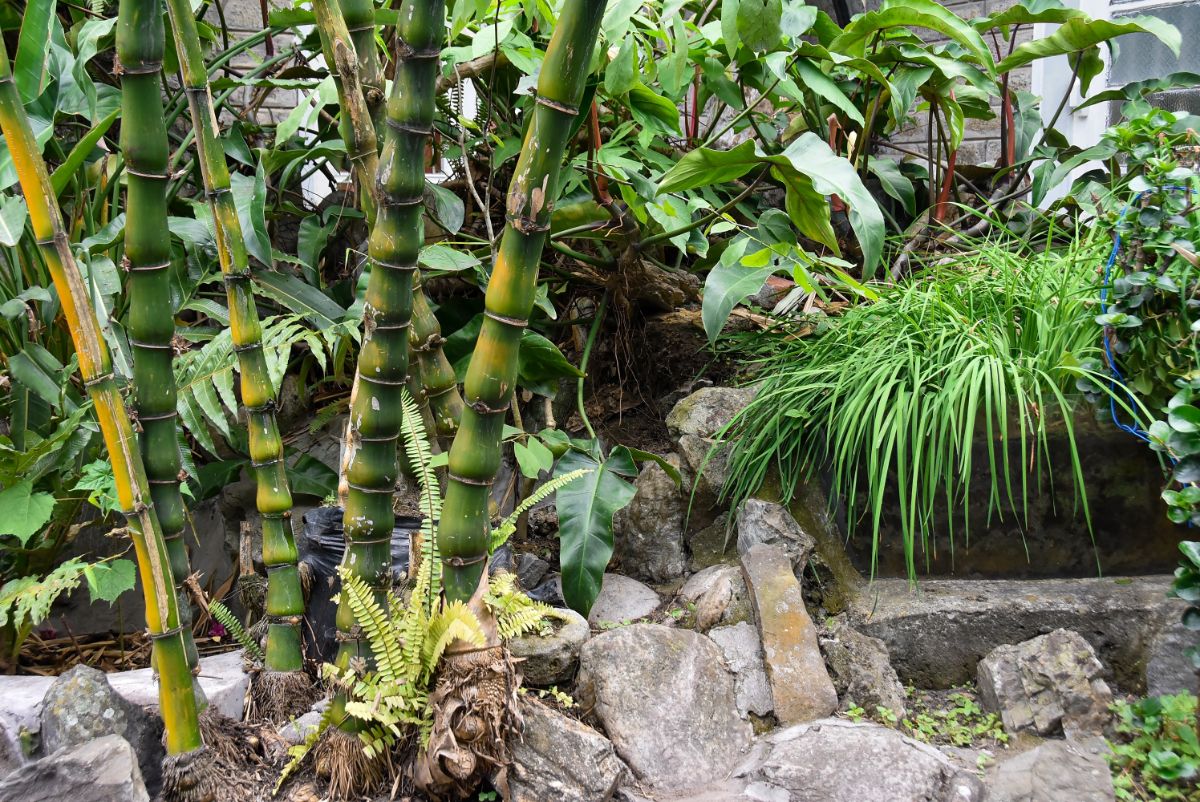
Grasses, sedges, and rushes have a similar look and visual appeal. Identifying which type of plant you have can be a bit tricky, especially if you inherited a garden that’s already planted and there aren’t any plant ID labels. But with a few tricks up your sleeve, you can learn to differentiate these plant types from each other, allowing you to discover exactly what plants are growing in your landscape.
If you’re starting with a new garden and purchasing plants for sowing, identifying what plants you have may not be as important to you. However, sedges, rushes, and grasses have slightly different growing requirements. Understanding what these plants need to grow happily can help you choose the right plants for your garden.
Ornamental grasses (Poaceae)

Plants in the grass family come in many different shapes and sizes, but they also share some commonalities. Grass plants can be found throughout the world, but more species are native to warm and tropical areas than cool ones. Grasses also tend to grow in wide open spaces, but some grasses can also thrive in shade.
In general, grasses often have larger and showier seed heads than rushes and sedges, but some sedges and rushes can be very ornamental. Grasses also often have flat or round stems with hollow cores, while the stems of sedges are usually angular. Grass leaves are also “two-ranked,” meaning the leaves sprout on two sides of the stem, while sedges usually have leaves appearing in three vertical planes.
One other important distinguishing characteristic is that grass plants often have swollen, knobby joints or nodes on their stems. Probably the most obvious example of a “jointed” grass is bamboo, but if you carefully inspect other grass plants, you’ll likely notice they have joints too!
Some plants are obviously grasses like the grass growing in your yard. However, many plants we don’t think of as “grasses” actually are grasses too. For instance, many of the cereal grains we eat – oats, rye, millet, barley, corn, and rice – are actually members of the grass family!
When it comes to growing ornamental grasses for aesthetic appeal, there are lots of choices to pick from, and you’ll usually find a larger selection of grasses than rushes and sedges. Some of the most popular ornamental grass plants for garden landscapes include:
Fountain grass (Pennisetum setaceum)
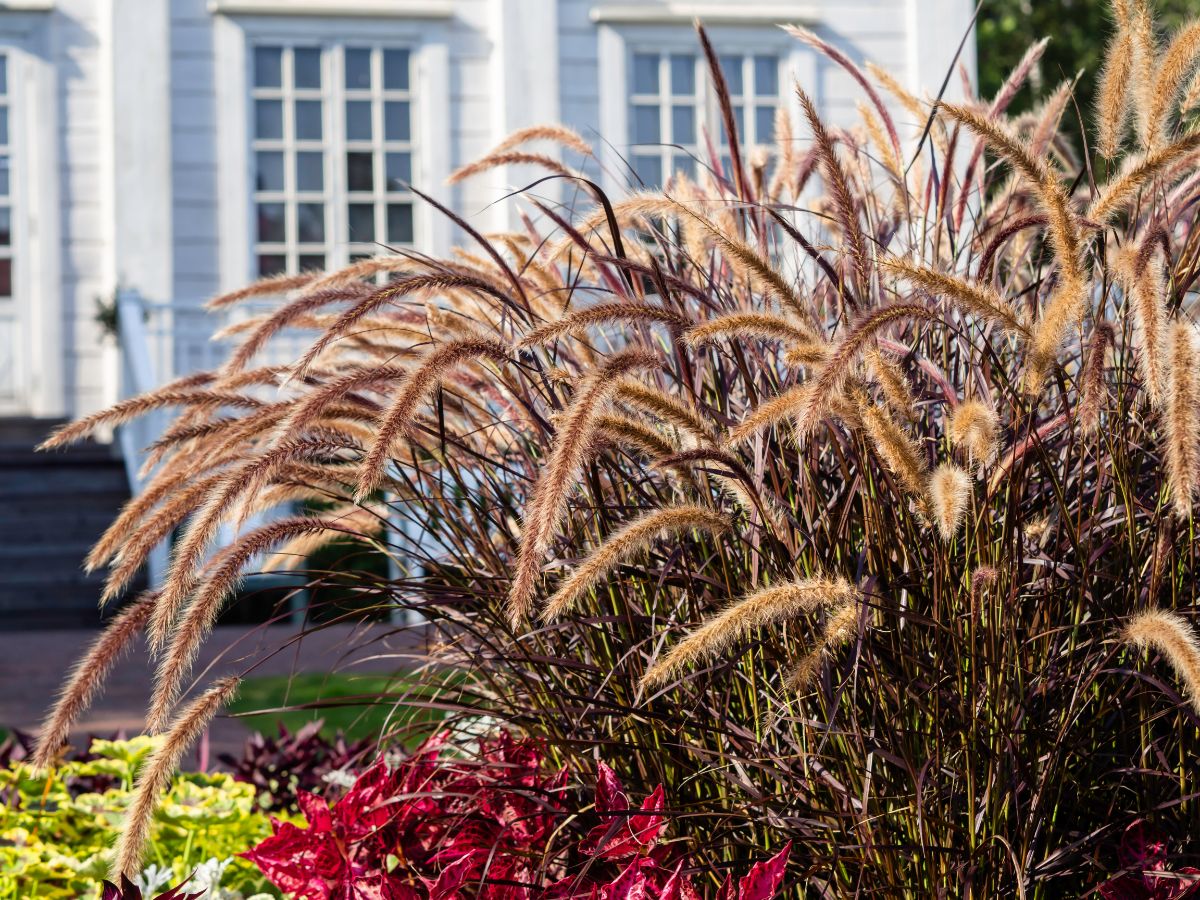
| Plant name: | Fountain grass |
| Light requirements: | Full sun to part shade |
| Water requirements: | Moderate to low |
| Growing zone: | Zones 4 to 10 |
Native to Africa and Asia, fountain grass is one of the most popular and easiest-to-find ornamental grasses around. These grasses are famous for their large, fuzzy seed heads and easy-going nature, and they can be easily grown in areas with lots of hot, bright sun. While there are many stunning types of fountain grass to choose from, one of the most striking varieties is purple fountain grass, which has deep, dark leaves for tons of garden drama.
In winter, fountain grass will stop growing, but its seed heads can continue to add visual interest to your landscape and tons of texture too. However, one thing to keep in mind with this plant is that it can become invasive in some areas, so be sure to do your research before planting fountain grass in your landscape.
Ravenna grass (Saccharum ravennae)
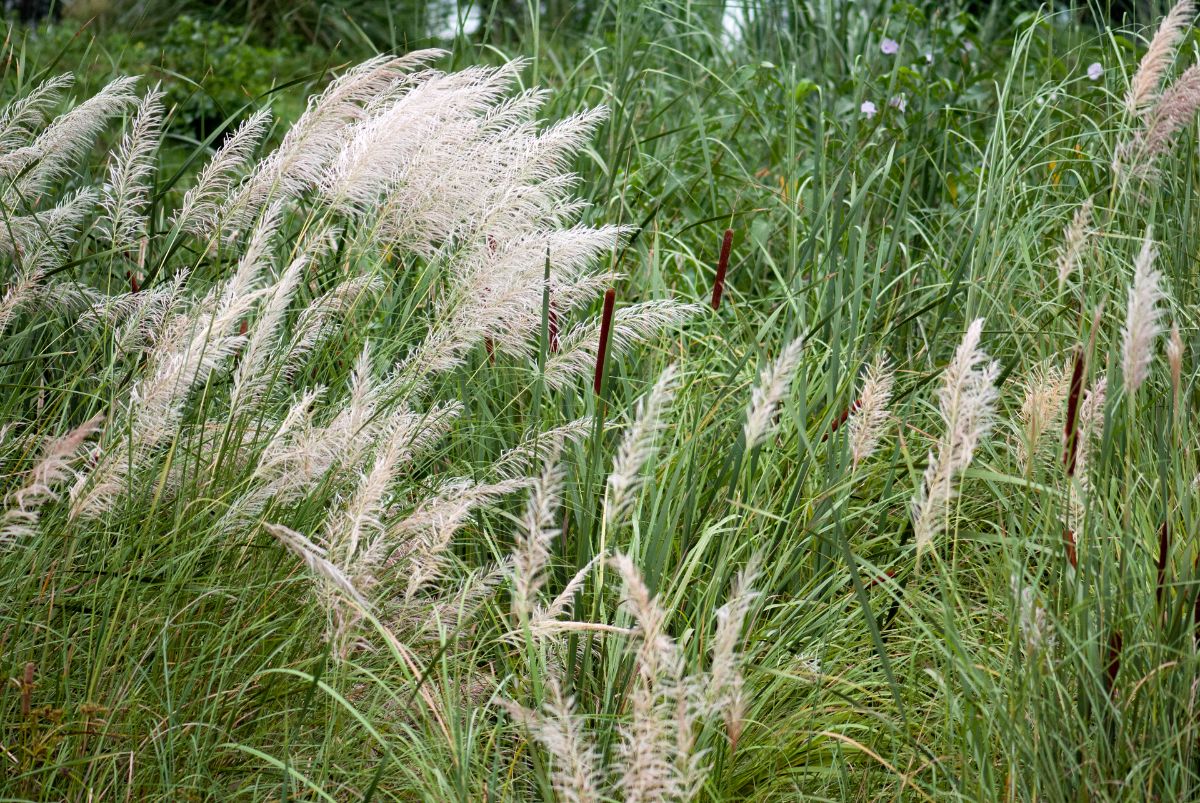
| Plant name: | Ravenna grass |
| Light requirements: | Full sun |
| Water requirements: | Moderate |
| Growing zone: | Zones 6 to 9 |
One of the tallest ornamental grasses you can find, Ravenna grass is another attractive option with large plume-shaped seed heads that can be enjoyed throughout the year. When the seeds mature, birds and other wildlife love feasting on Ravenna grass, and these plants have better cold resistance than many other ornamental grasses. Like fountain grass, Ravenna grass can become invasive in some areas, but it’s otherwise a very easy plant to maintain.
Blue oat grass (Helictotrichon sempervirens)

| Plant name: | Blue oat grass |
| Light requirements: | Full sun |
| Water requirements: | Moderate to low |
| Growing zone: | Zones 3 to 8 |
Blue oat grass is a graceful-looking plant that forms tidy mounds as it grows. One of the most alluring aspects of blue oat grass is its soft, blue-gray coloration, but this plant is also simple to maintain, and it’s often a top choice for rock gardens. While blue oat grass looks charming on its own, it also combines beautifully with other ornamental grasses if you’d like to create a more complex planting design.
Once established, blue oat grass is drought and salt tolerant, making it a good choice for planting along salty roadways or near the sea!
Maiden grass (Miscanthus sinensis)
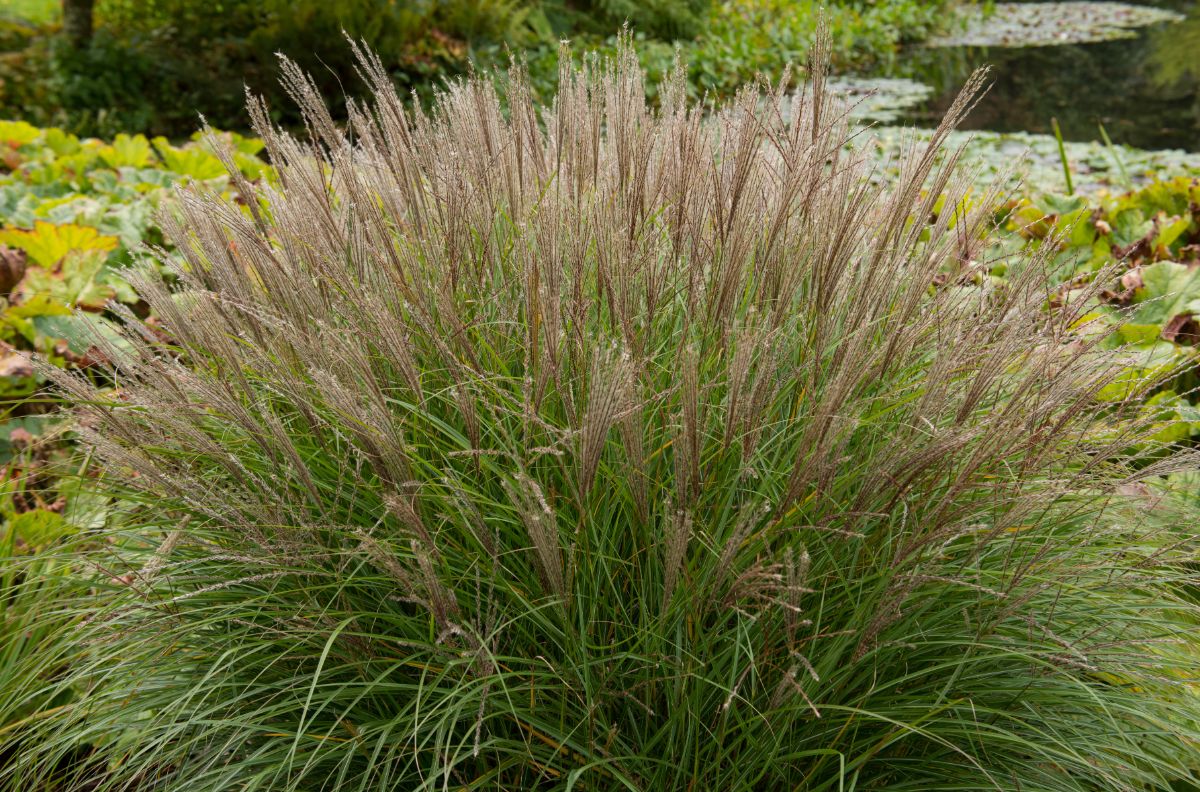
| Plant name: | Maiden grass |
| Light requirements: | Full sun to part shade |
| Water requirements: | Moderate to low |
| Growing zone: | Zones 5 to 8 |
A tall, stately plant that can grow up to 12’ high, maiden grass is sometimes known as Chinese silvergrass due to its silvery seed heads. This plant grows best in hot, sunny climates, and it doesn’t do well in alkaline soil, but it can be a good choice for acidic garden beds or coastal areas. Like some other grasses, maiden grass can become invasive in some regions, but it tends to be a relatively slow-growing plant in many areas, especially during its first few years.
Zebra grass (Miscanthus sinensis'Zebrinus')
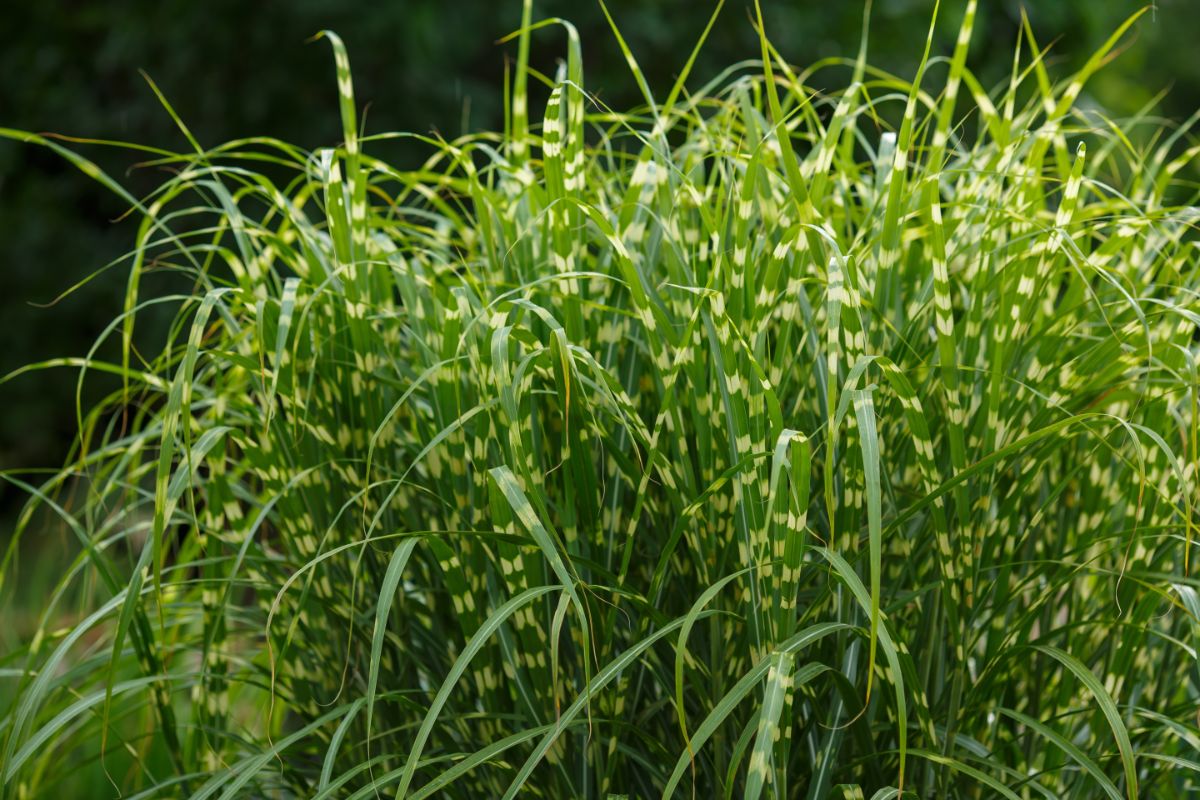
| Plant name: | Zebra grass |
| Light requirements: | Full sun |
| Water requirements: | Moderate |
| Growing zone: | Zones 5 to 9 |
Aptly named zebra grass features bright striping on its long and slender leaves, which adds something different to ornamental beds. A close relative of maiden grass, zebra grass can become invasive in some areas too, but this is less likely to be a problem in cooler spots. A very adaptable plant, zebra grass can grow in a range of soil types, and it’s also drought and salt tolerant!
Japanese forest grass (Hakonechloa macra)
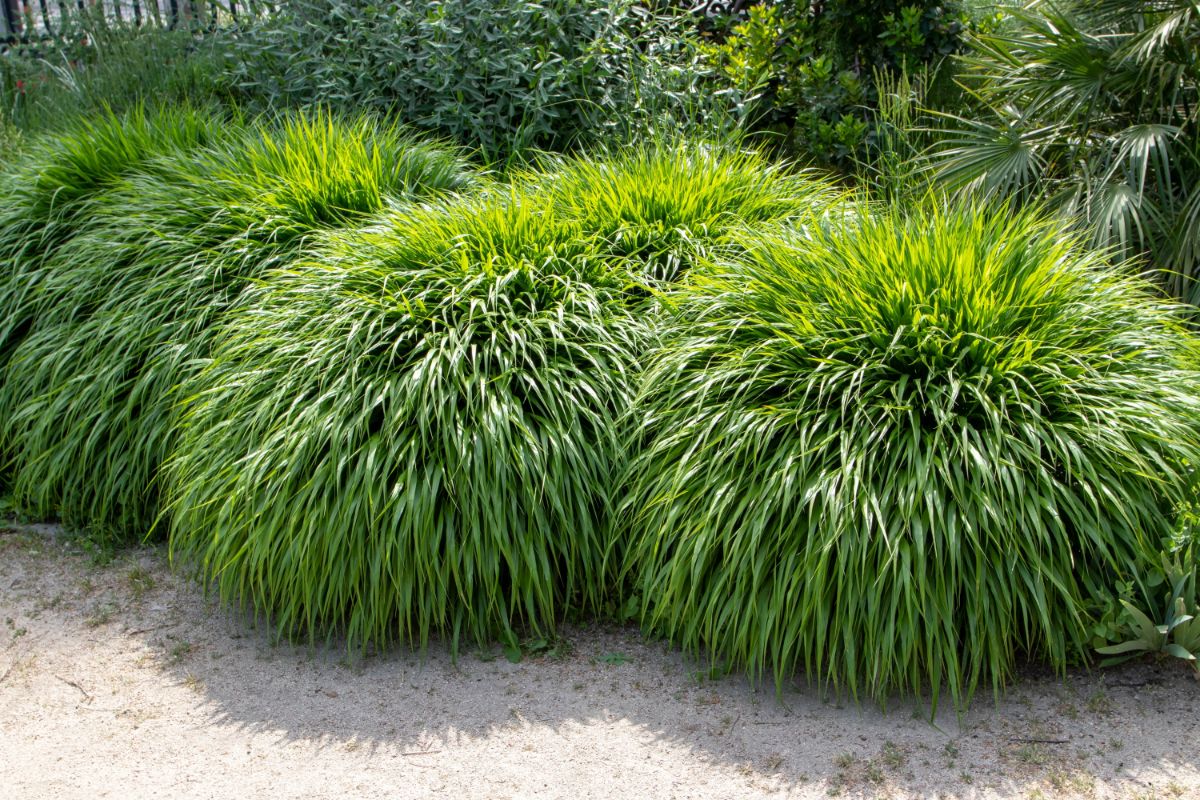
| Plant name: | Japanese forest grass |
| Light requirements: | Shade |
| Water requirements: | Moderate |
| Growing zone: | Zones 5 to 9 |
A top choice for shady spots, Japanese forest grass is an elegant-looking plant that forms tight mounds of foliage as it grows. Japanese forest grass has bright green leaves that can be used to accent other plants, but this plant is also showy enough to hold its own in a landscape. Even better, unlike many other grasses, Japanese forest grass is a slow grower, and it doesn’t have invasive tendencies.
When fully grown, Japanese forest grass usually maxes out at around 18” tall by 24” wide, making it a good size for planting along garden borders and walkways.
Clumping bamboo (Bambuseae spp.)

| Plant name: | Clumping bamboo |
| Light requirements: | Depends on variety |
| Water requirements: | Moderate |
| Growing zone: | Zones 5 to 9 (most varieties) |
Bamboo may not be the first plant you think of when you think of grasses, but bamboo is actually in the grass family! Bamboo plants can make a big impact on garden landscapes, and they are one of the top choices for minimalist and Zen-type garden designs. However, one of the issues with bamboo is that these plants can grow very aggressively, and they often become invasive.
One way around this is to only invest in clumping bamboo and avoid running bamboo species, which are must more likely to spread. Clumping bamboo tends to be so well-behaved that many growers keep it in containers, but it can also be grown in inground gardens. And, of course, bamboo also makes a fantastic privacy screen for backyard patios and porches!
If you like the idea of growing clumping bamboo, popular varieties to try include Chinese dwarf bamboo (B. guangxiensis), Buddha belly bamboo (B. ventricosa), and Weaver’s bamboo (B. textilis).
Ornamental millet (Pennisetum glaucum)

| Plant name: | Ornamental millet |
| Light requirements: | Full sun |
| Water requirements: | Moderate |
| Growing zone: | Zones 2 to 11 |
The grass family is full of surprises… including the fact that millet is technically grass too! Millet can be grown for eating, but it’s also so attractive that many growers keep millet solely for ornamental appeal.
What’s more, millet seeds are irresistible to birds! If you grow millet in your garden, you can easily attract an assortment of wild birds that can help control garden pests naturally. Plus, in autumn, you can harvest millet seed heads for crafting and wreath making as well.
Ornamental corn (Zea mays)
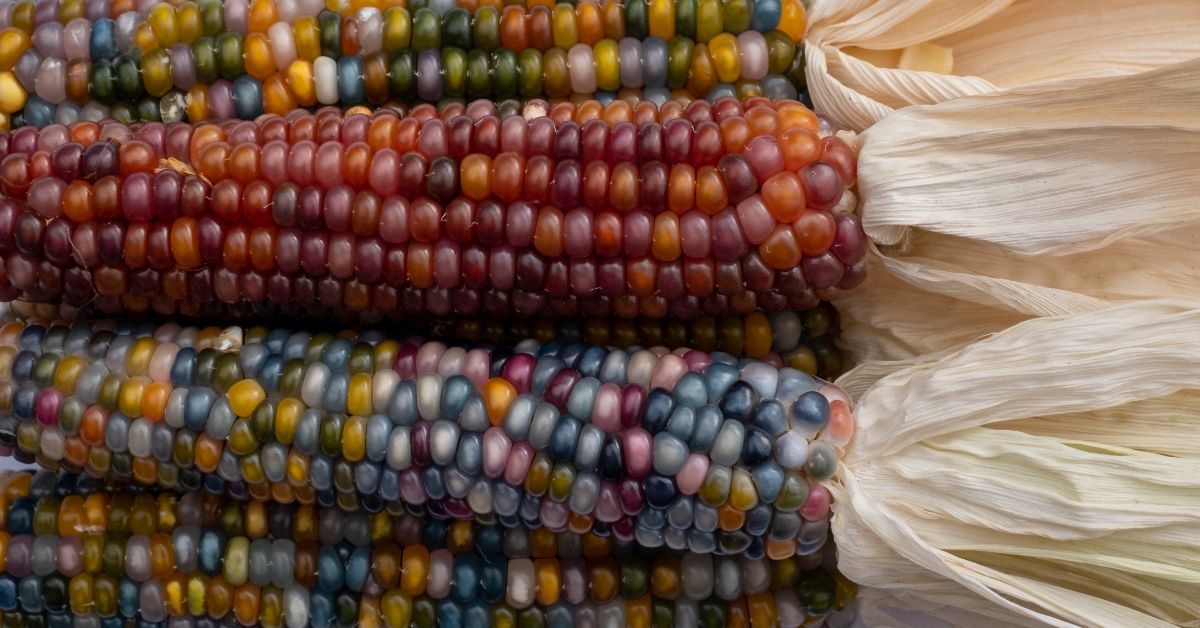
| Plant name: | Ornamental corn |
| Light requirements: | Full sun |
| Water requirements: | Moderate |
| Growing zone: | Zones 3 to 11 |
All corn is technically grass, but ornamental corn is the best corn to grow for aesthetic purposes. Once harvested, you can use ornamental corn for crafting or wreath making, or you can leave the seed heads outdoors to feed wildlife. Depending on the type of ornamental corn you’re growing, you can get kernels in all sorts of fantastic colors, including gold, burgundy, brown, and red.
Ornamental sedges (Cyperaceae)
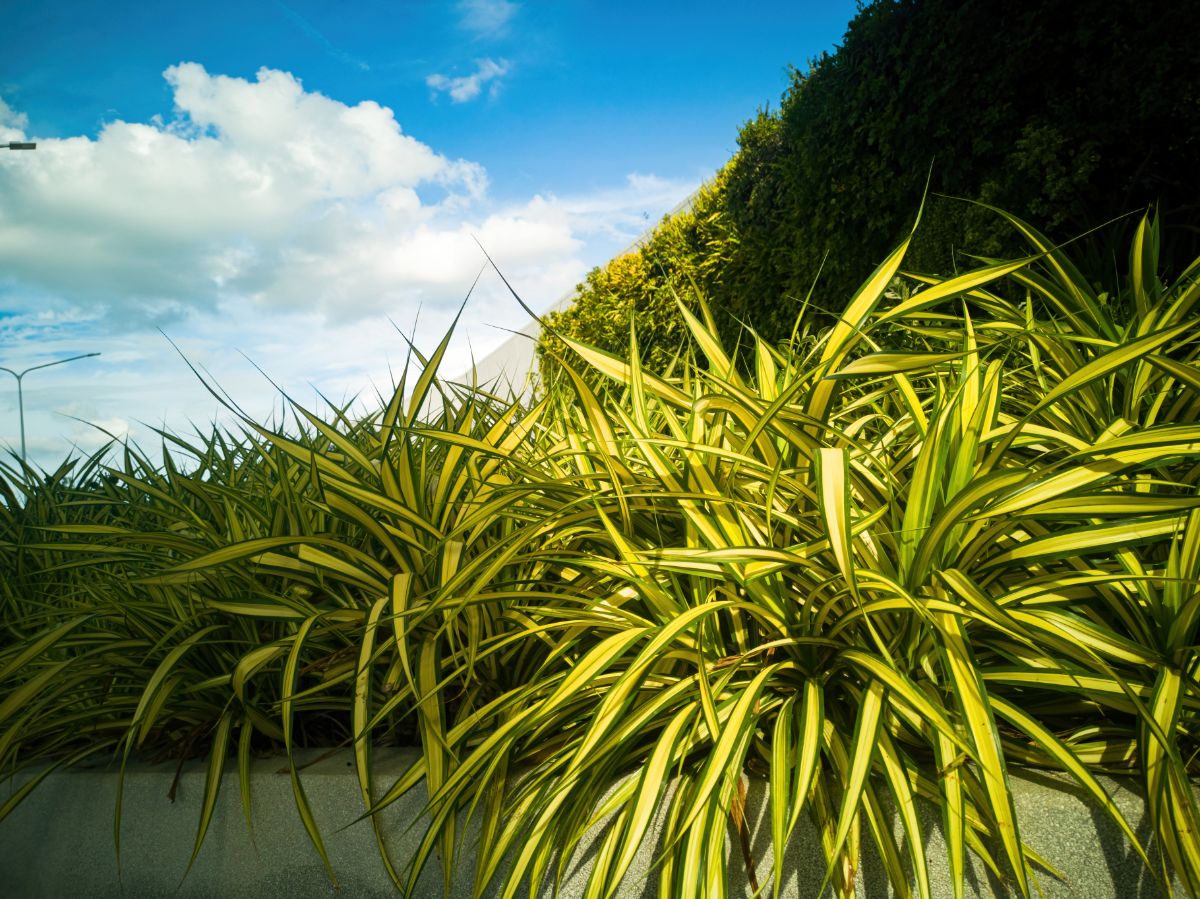
As opposed to grasses that favor warmer climates, sedges are often found in cooler, wetter habitats, although they can grow all over the world and in dry areas too. Sedge seed heads can be less pronounced than grass seed heads, although some sedges are quite ornamental. These plants also usually have leaves that sprout in threes.
One of the easiest ways to determine if a plant is a sedge or not is to inspect the stem. Sedges typically have triangular stems with pronounced sides. If you’re having a hard time deciding if a plant’s stem is angular or round, roll it between your fingers or cut the stem in half so you can see it in cross-section.
Sedges may be less commonly sold at plant nurseries, but you can usually still find them -- especially if you go to specialty plant nurseries rather than big box stores. Some of the most popular sedges for ornamental use include:
Crested oval sedge (Carex cristatella)
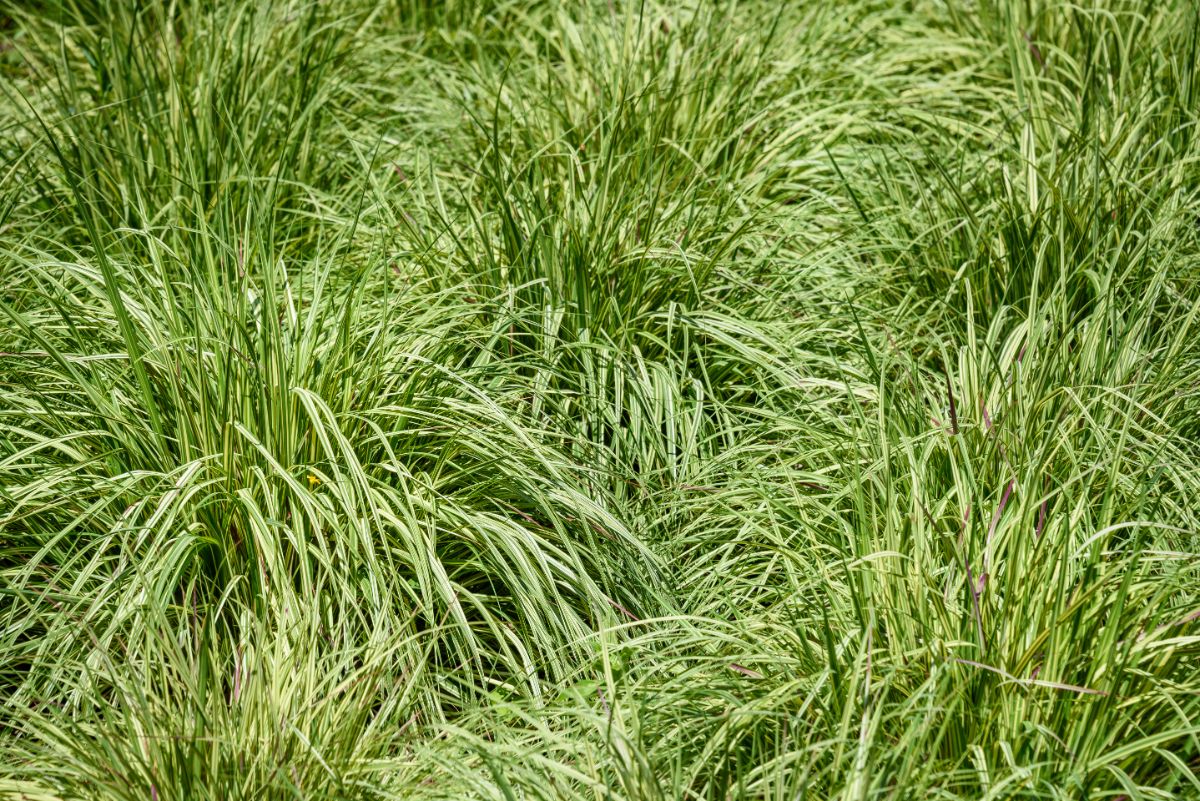
| Plant name: | Crested oval sedge |
| Light requirements: | Full sun to shade |
| Water requirements: | High |
| Growing zone: | Zones 3 to 7 |
The crested oval sedge has spiny spikelets that give the plant a striking, architectural look and help distinguish it from other grass-like plants. Ideal for growing in moist areas, crested oval sedge provides an important food source for an assortment of insects, but mammals usually leave it alone. If you’re looking for a good plant to grow near a water feature or in a soggy section of your yard, you may want to try out this sedge variety.
Bur sedge (Carex grayi)
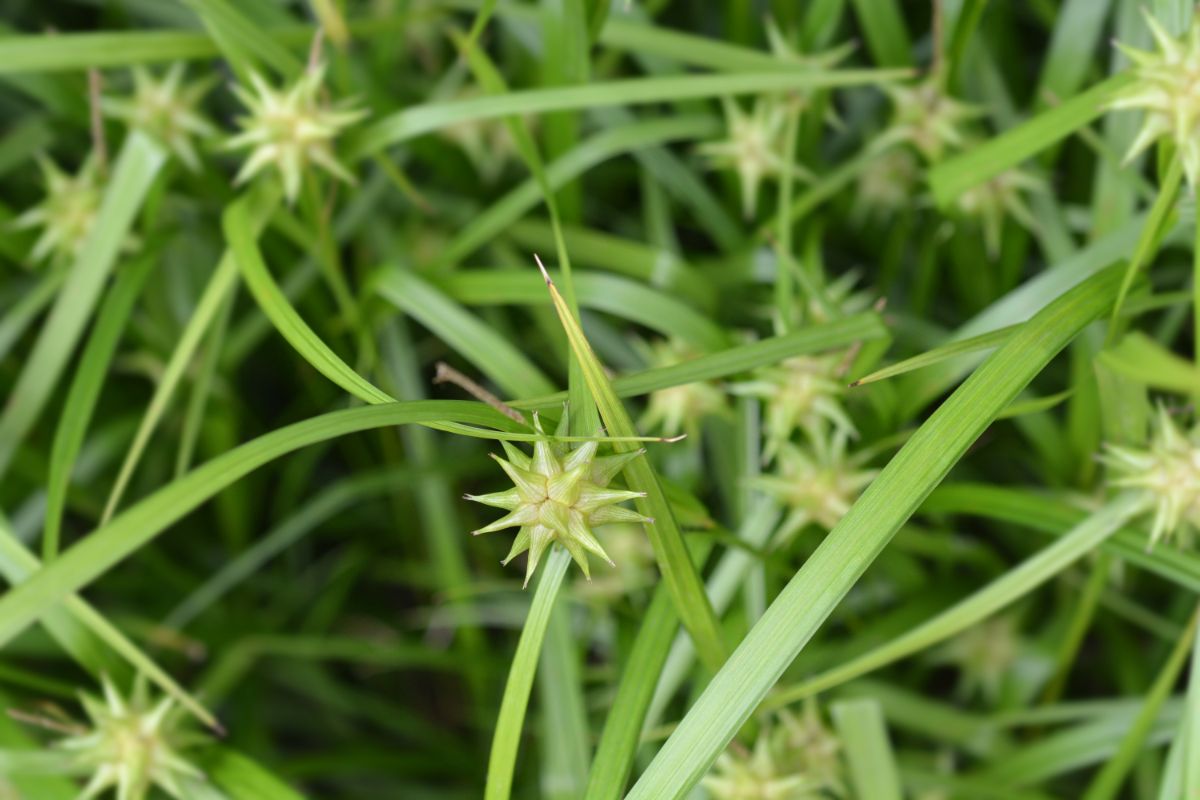
| Plant name: | Bur sedge |
| Light requirements: | Part shade |
| Water requirements: | High |
| Growing zone: | Zones 5 to 9 |
A less common sedge variety, bur sedge also has tiny spikelets, but its spikelets tend to be globular in form and slightly resemble a Medieval mace. A water lover, bur sedge is often grown along stream banks or in rain gardens, and it can also handle occasional flooding. These sedges are most attractive in mid-summer when they’re fruiting, and their spikelets are often used in cut-and-dried floral displays.
Creek sedge (Carex amphibola)
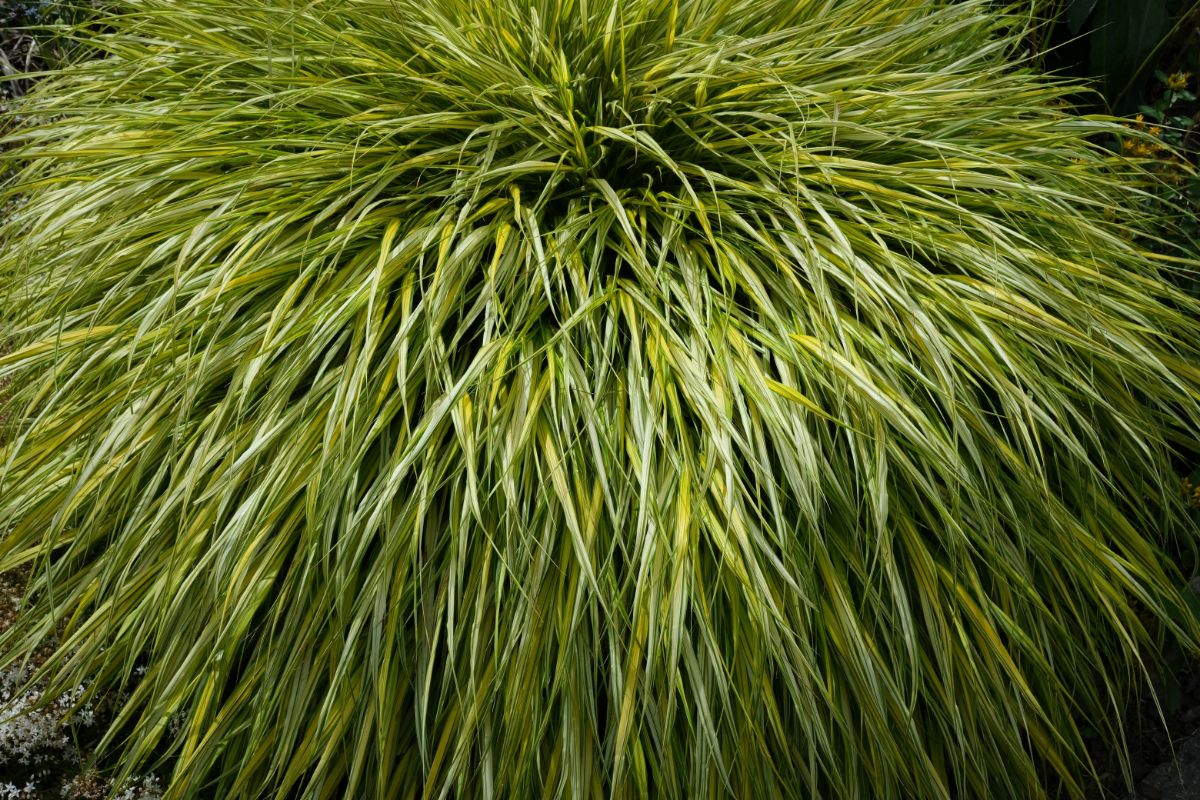
| Plant name: | Creek sedge |
| Light requirements: | Shade |
| Water requirements: | High |
| Growing zone: | Zones 3 to 9 |
Commonly found growing in moist, deciduous forests, creek sedge is another good plant choice for water gardens. This sedge has a gentle, mounded form thanks to its fine leaf forms, and it flowers in late spring for even more interest. Turtles often love munching on creek sedge, and it’s a host plant for skipper butterflies, but deer usually give it a wide berth.
Pennsylvania sedge (Carex pensylvanica)
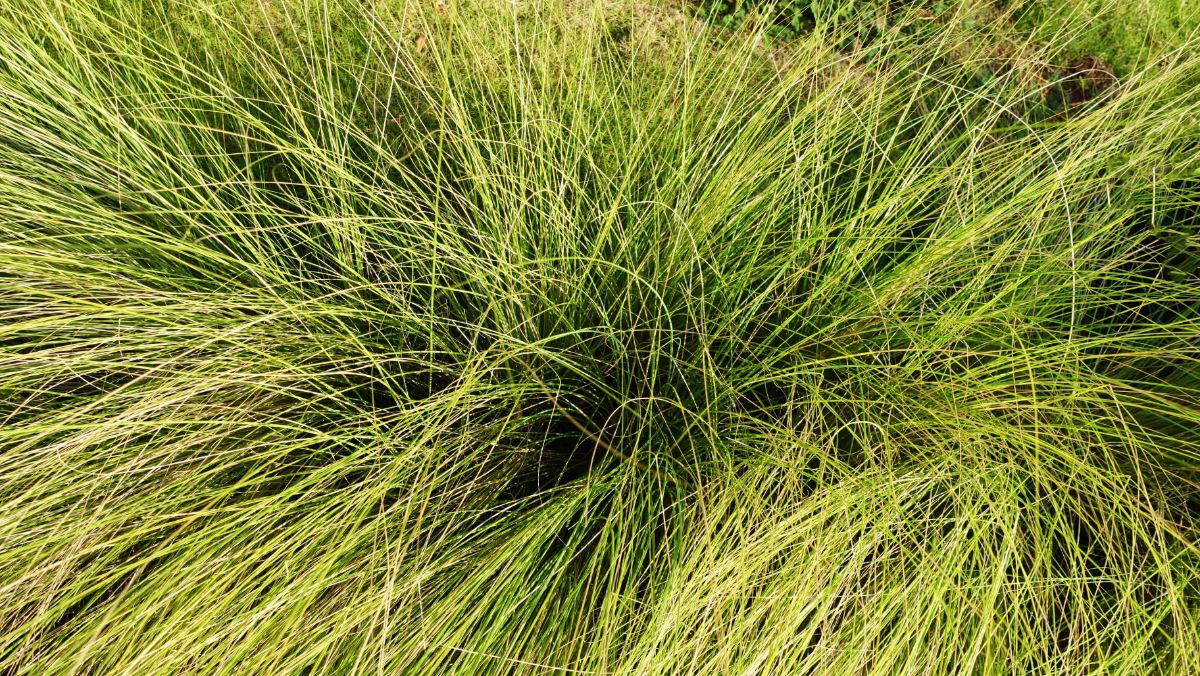
| Plant name: | Pennsylvania sedge |
| Light requirements: | Part shade |
| Water requirements: | Moderate |
| Growing zone: | Zones 3 to 7 |
Frequently used as a lawn alternative, Pennsylvania sedge has a low and creeping growth habit, and it rarely grows higher than 8”. If you hate mowing grass, you can grow a lawn of Pennsylvania sedge and never need to mow again! This sedge variety doesn’t need as much water as many other sedge types, and it can be grown in full to part shade.
Eastern star sedge (Carex radiata)
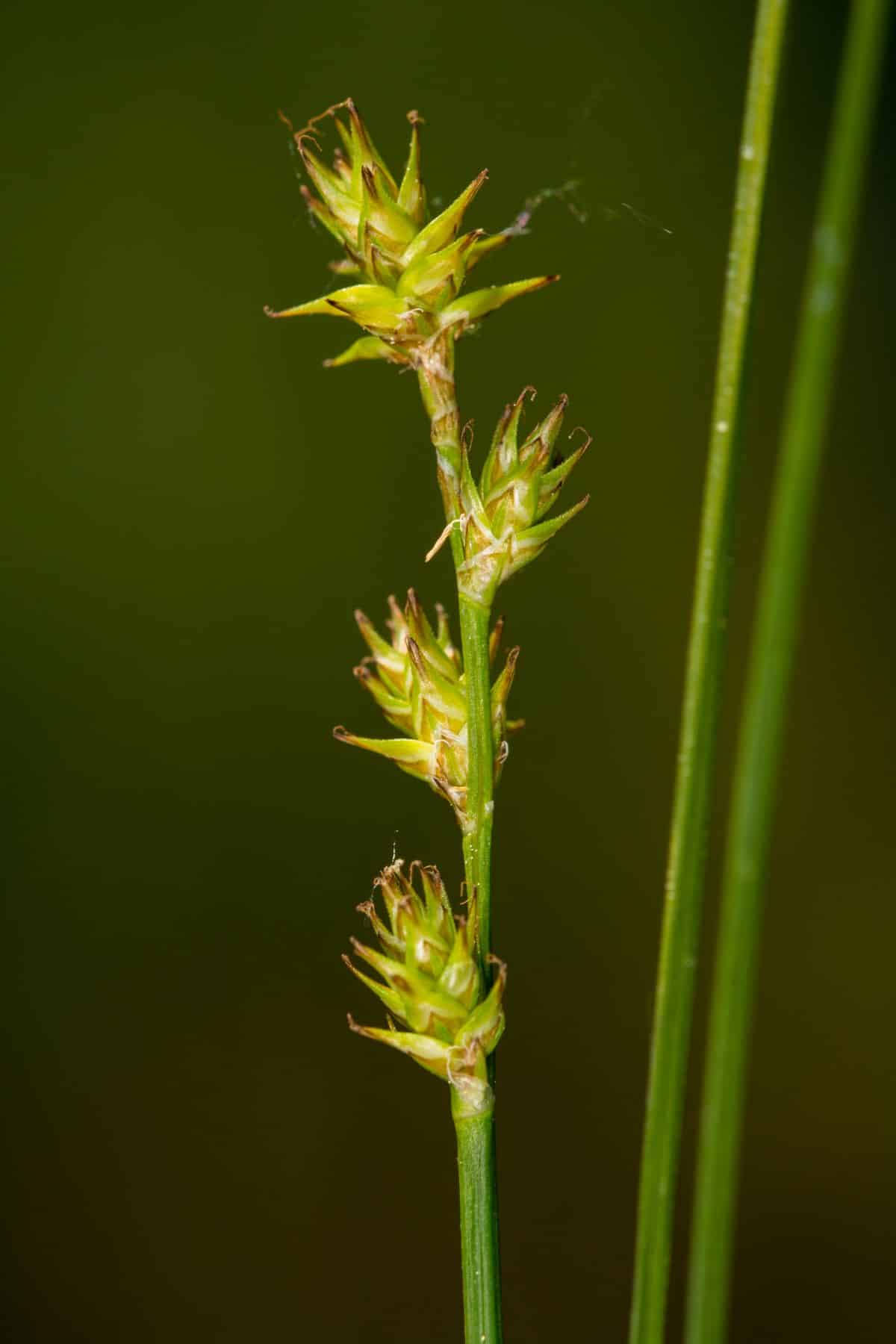
| Plant name: | Eastern star sedge |
| Light requirements: | Part shade |
| Water requirements: | High |
| Growing zone: | Zones 4 to 8 |
Another low-growing, ornamental sedge, the eastern star sedge, is mostly known for its slender, grass-like leaves and low maintenance needs. Adaptable to moist and shady locations, eastern star sedge is a slow grower, and it won’t overwhelm garden spaces. Even better, this plant blooms small, star-shaped flowers in late spring, and its seed heads are a favorite snack of wild birds, including grouse and other gamebirds.
Ornamental rushes (Juncaceae)
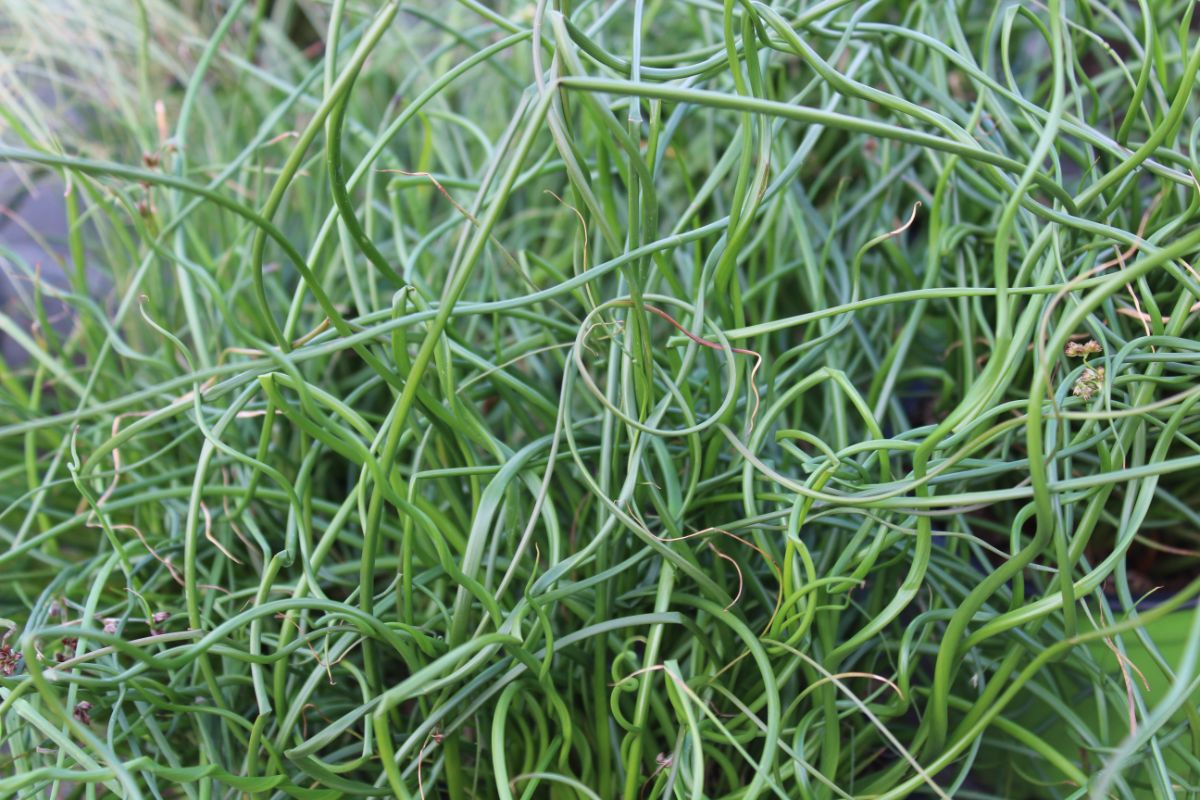
Like sedges, rushes are more common in cooler and wetter areas, but they can be found in other habitats. Unlike grasses, rushes tend to be most common in northern climates, and many rush plants have the ability to tolerate moist soil.
Rush flowers are often quite inconspicuous compared to grass heads, but this isn’t always the case. Unlike sedges, rushes typically have rounded stems that are easily rolled between your fingers, and their stems lack the knobby joints that are so prominent in members of the grass family. Finally, rush leaves most often sprout from the base of the plant and grow in a spiral around the stem, although some rushes have different leaf formations.
As with sedges, ornamental rushes are less commonly sold at big box stores, so you may need to visit local plant nurseries to find them. Some great examples of ornamental rushes for garden settings include:
Common rush (Juncus effusus)
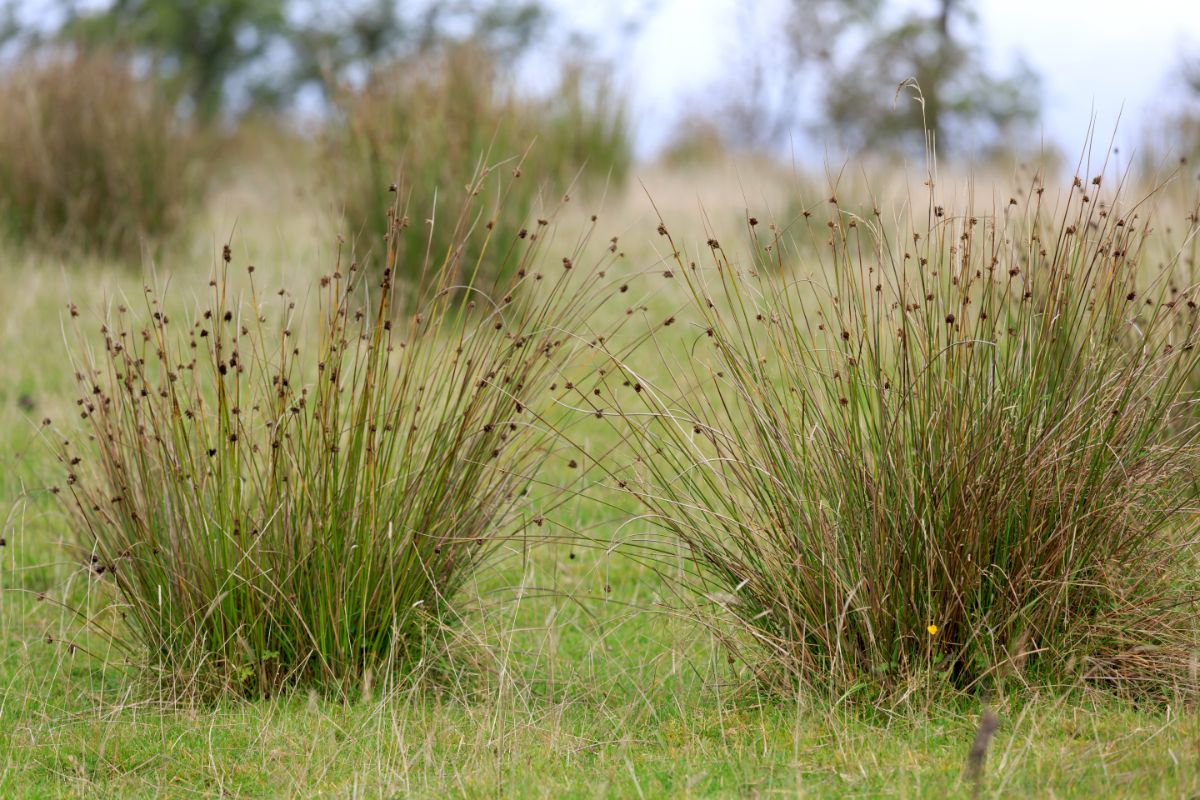
| Plant name: | Common rush |
| Light requirements: | Full sun to part shade |
| Water requirements: | High |
| Growing zone: | Zones 2 to 9 |
Native to North America, the common rush makes a strong silhouette in garden designs, and it’s adaptable enough to grow in lots of different spots. While common rush is often grown in water gardens and around small ponds, it can also tolerate dry soil, allowing you to grow it in garden beds too. Occasionally used for basket weaving, the common rush has narrow leaves, and it can grow up to 4’ tall when mature.
Depending on who’s doing the labeling, the common rush is sometimes also labeled as a “soft rush.”
Corkscrew rush (Juncus effusus)

| Plant name: | Corkscrew rush |
| Light requirements: | Full sun to part shade |
| Water requirements: | High |
| Growing zone: | Zones 4 to 9 |
Corkscrew rush is actually a common rush cultivar, but this variety has curled leaves for even more visual appeal. This plant is one of the most common types of rushes sold at big box stores and local nurseries, and it’s often marketed as a container plant. That said, the best use for corkscrew rushes is in water gardens where their unique foliage can’t help but draw the eye.
Like many other rushes, the corkscrew rush loves lots of water, but it can also be used as an architectural element in container gardens. In some areas, this rush can grow aggressively, but it is native to North America.
Snowy woodrush (Luzula nivea)
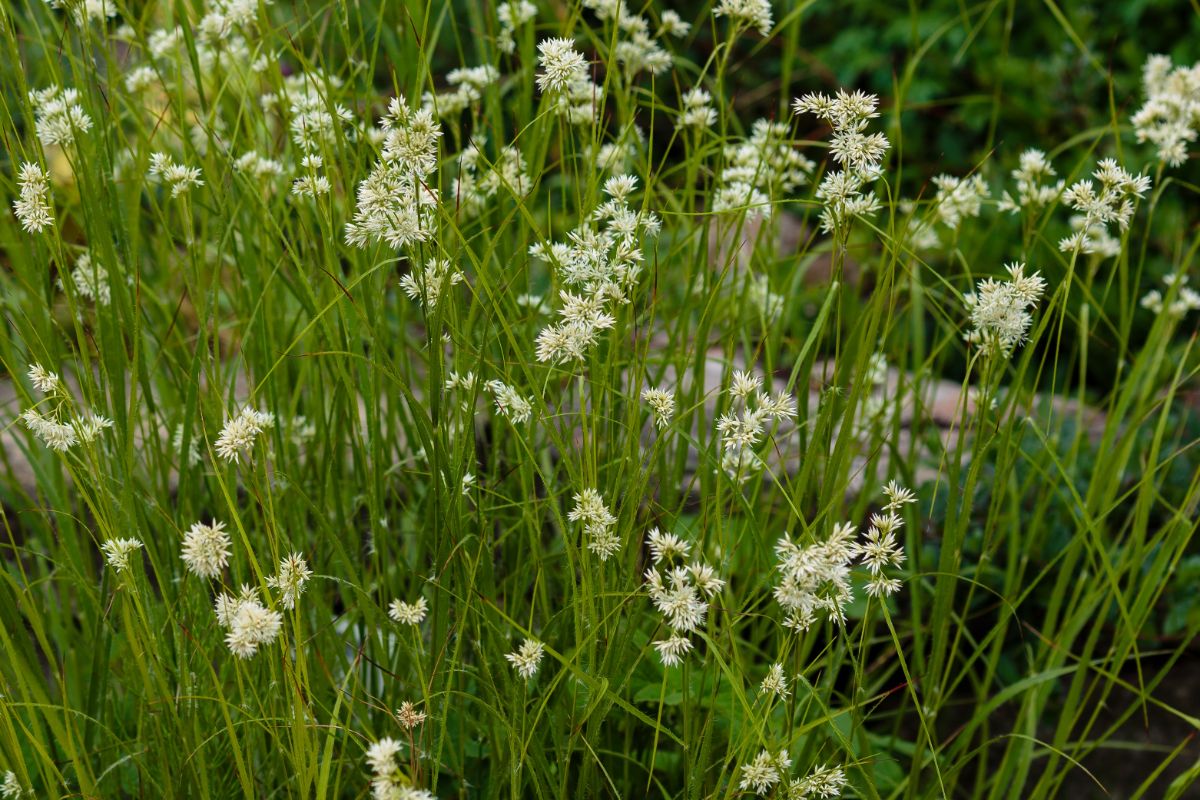
| Plant name: | Snowy woodrush |
| Light requirements: | Part shade |
| Water requirements: | High |
| Growing zone: | Zones 4 to 9 |
Often grown as a slow-spreading groundcover, snowy woodrush is a popular ornamental rush variety thanks to its snowy white flowers that appear in early to mid-summer. This plant stays evergreen all year round, and it can be grown in shady areas. Unlike some other rush plants, snowy woodrush doesn’t love soggy soil, and it should be grown in well-drained spots.
Golden woodrush (Luzula sylvatica 'Aurea')
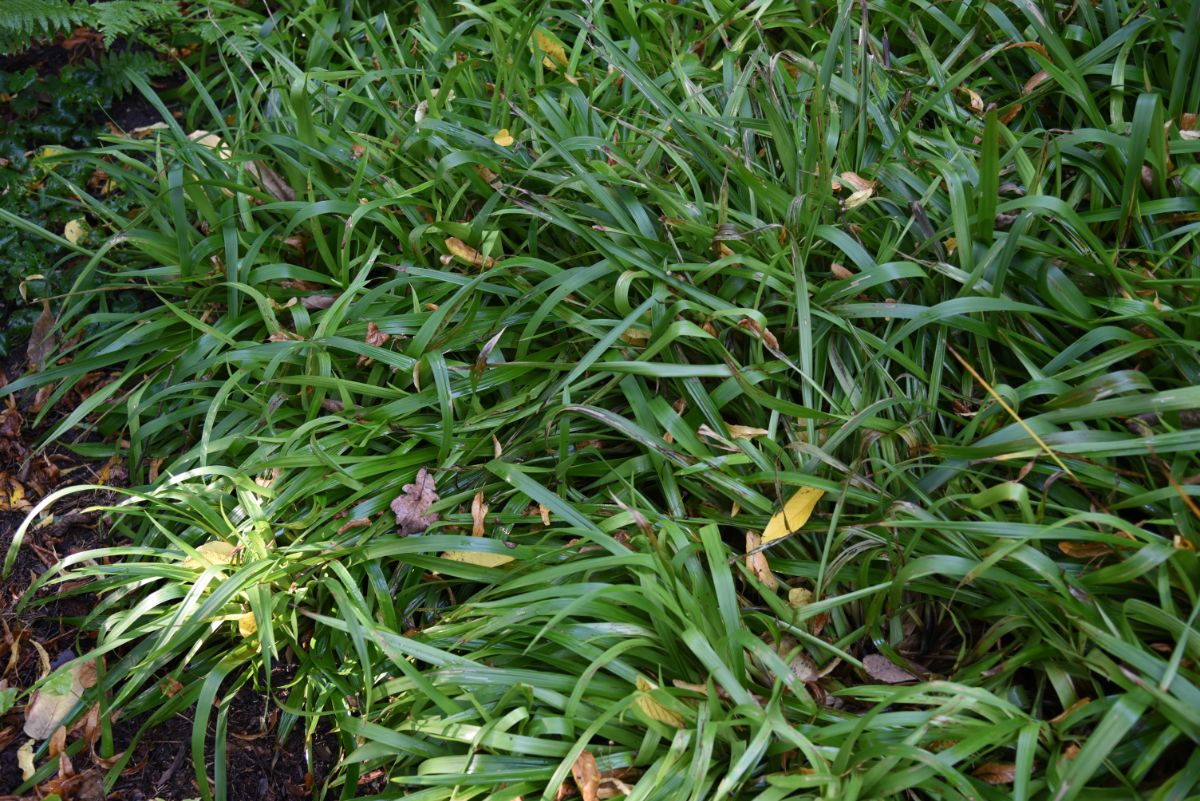
| Plant name: | Golden woodrush |
| Light requirements: | Full sun to shade |
| Water requirements: | Moderate |
| Growing zone: | Zones 5 to 9 |
Golden woodrush is an herbaceous perennial with narrow, grass-like leaves in a golden to chartreuse hue and airy sprays of flowers that bloom from spring to early summer. An excellent plant to try in wooded spots or as a garden border, the golden woodrush can be grown in sun or shade, and it’s hardy to growing Zone 4. Golden woodrush is a fast grower, but it only lives about 5 years, so you may need to replace your plants from time to time if they don’t naturally spread.
Summary
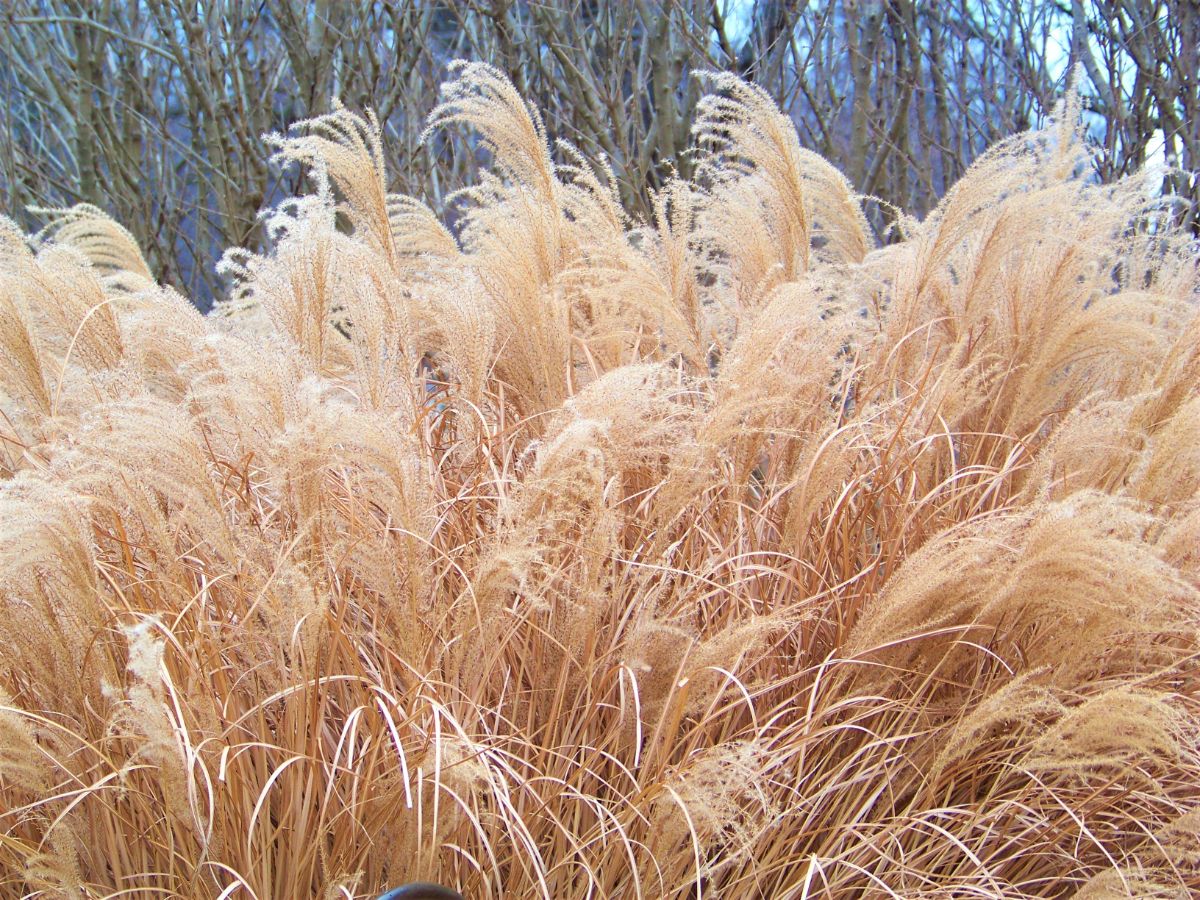
At first glance, ornamental grasses, rushes, and sedges may look alike, but these plants have distinct characteristics and growing needs that set them apart from each other. While ornamental grasses are often grown in gardens or as border plants, sedges, and rushes are commonly kept in water gardens and in shadier locations. However, there is a lot of variety in these plant families, so it’s difficult to generalize about any of these plants or where they’ll grow best.
Growing grass-like plants as ornamentals can add more color and texture to your landscape, and grass heads can even add movement to your garden when the wind blows. Some grass-like plants have a high water tolerance that makes them suitable for pond landscapes, while other plants keep their seed heads all winter long to provide food for birds in winter. Whatever plants you choose to grow, we hope this primer has helped to answer some of your questions about ornamental grasses and other similar-looking plants.
Many grass-like plants have a high salt tolerance, which makes them top choices for coastal gardens. However, if you’re looking for more salt-tolerant plants, we have a full guide on them right here.

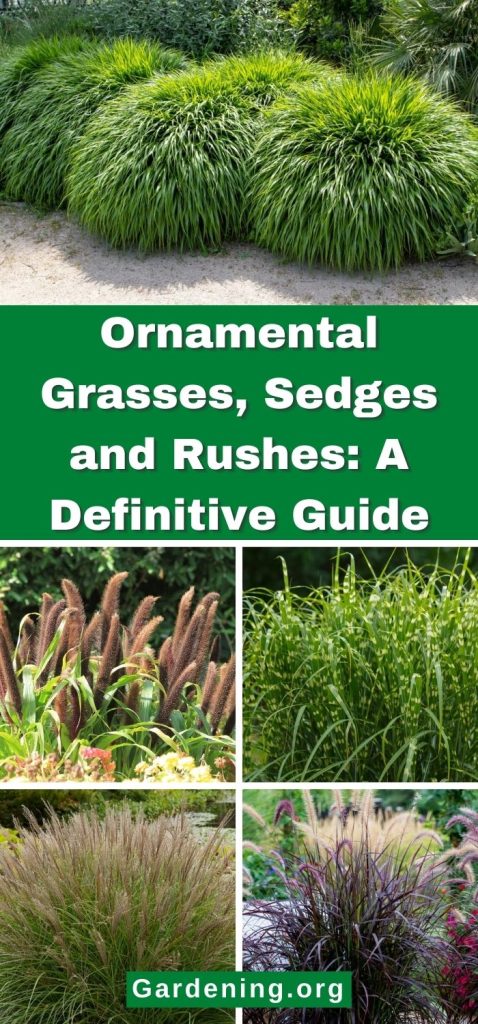
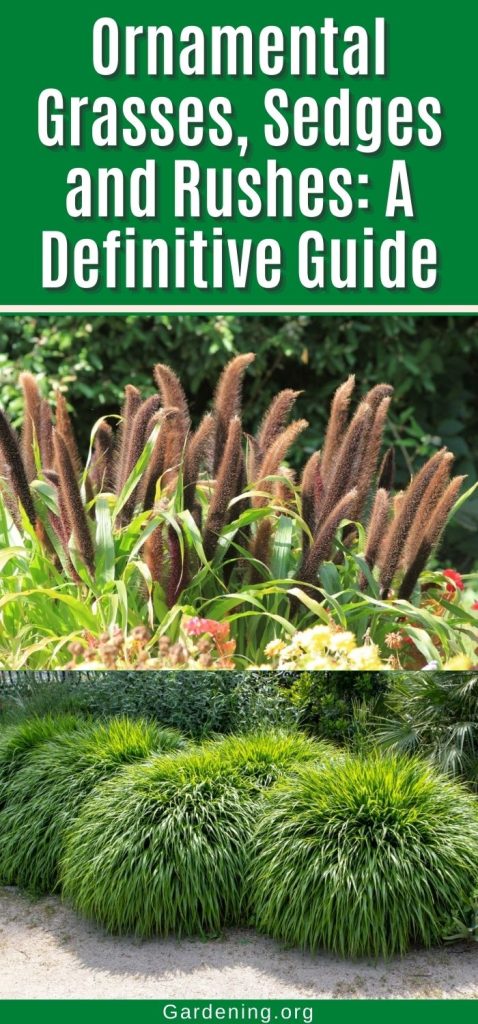
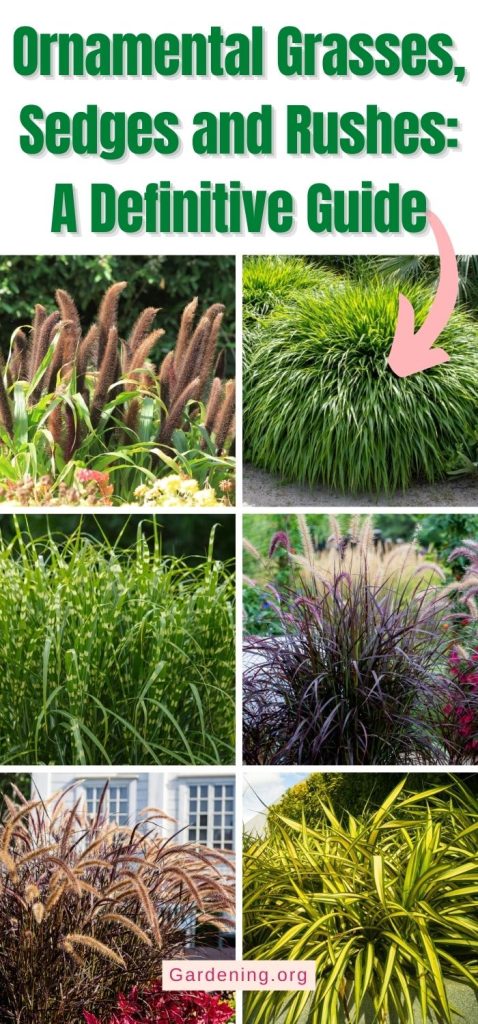
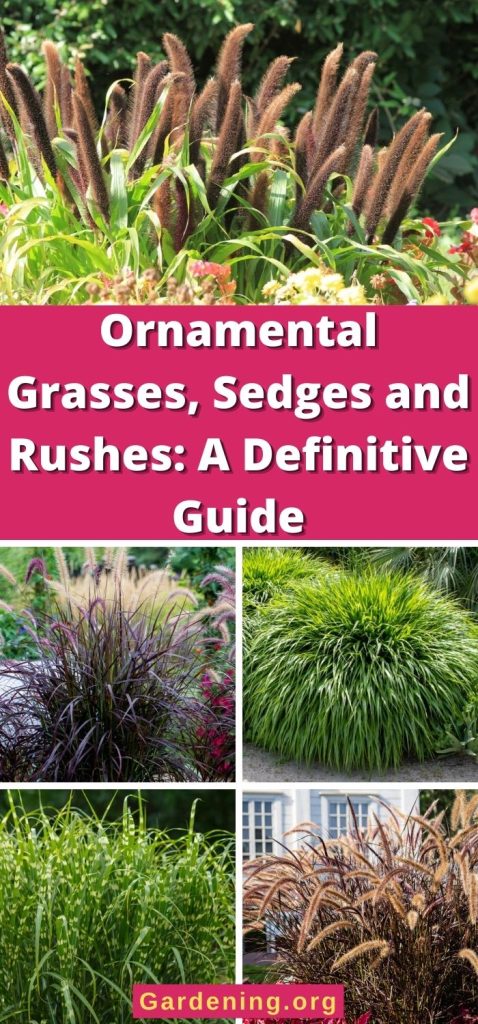
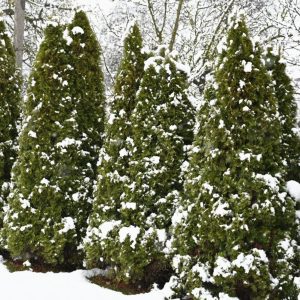


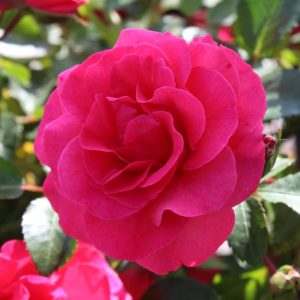
Leave a Reply